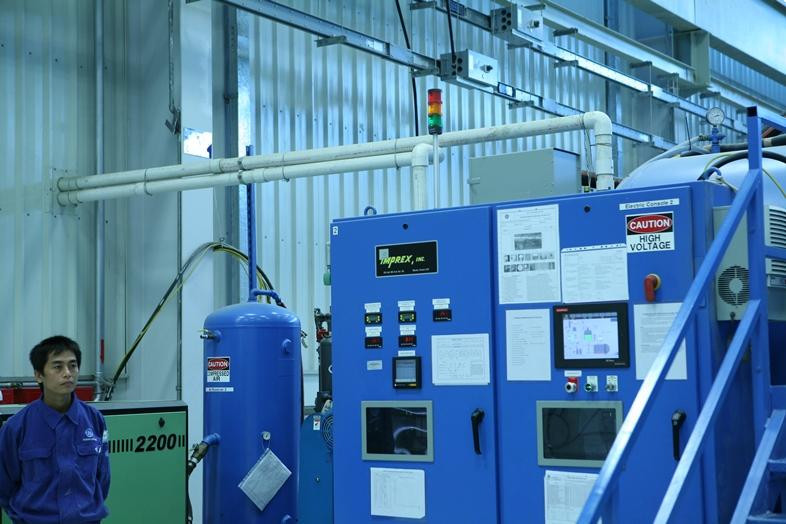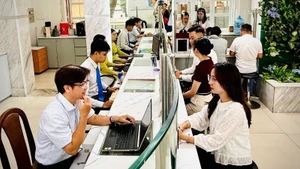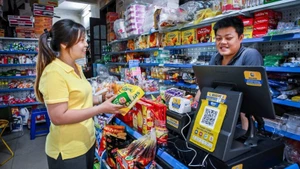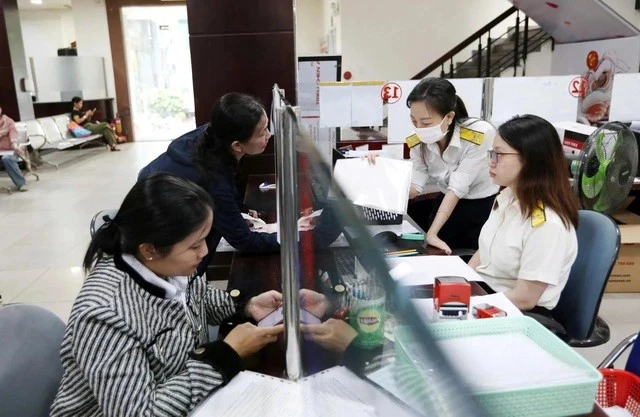At the fourth session of the 15th National Assembly (NA) kicked off on October 20 and set to be rounded off on November 15, the legislature will decide on the country’s Socio-economic Development Plan for 2023, laying firm ground work for the government to devise suitable solutions to achieve the new goals.
The government reported to the NA that it has set a new target of economic growth rate of 6.5% for next year and per capita GDP should be 4,400 USD. This will be lower than an expected rate of about 8% for this year and higher than 2.6% recorded last year.
“Based on the estimations that Vietnam’s GDP for 2022 will increase at a high rate of around 8%, and based on predictions that the local and global situations will continue encountering lots of difficulties and challenges such as high inflation and economic depression in a number of nations, it is suitable to set a target of 6.5% for 2023,” Minister of Planning and Investment Nguyen Chi Dung explained.
“Amid such difficulties, we should not be subjective and inattentive in economic monitoring. We must be steadfast in ensuring macroeconomic stability and reining in inflation, and we must tap into all opportunities for rapid economic recovery and development,” he said.
Caution
The government has ordered relevant ministries and agencies to “closely follow and make forecasts on the developments of fiscal and monetary policies of big countries and those who are trade and investment partners of Vietnam”, and to “frequently update scenarios on economic growth, inflation, credit quotas, and big balances so that the government can take the initiative in economic monitoring”.
“It is necessary to fully grasp the situation of domestic production and the supply-demand balances in all sectors, especially in the sector of labour and employment, and important items in the market such as fuel, electricity, and foodstuffs,” said a government report to the National Assembly Standing Committee. “Besides that it is also needed to make assessment of the situation of materials that may face temporary shortages in the short and long terms, so that sturdy solutions can be taken timely to ensuring goods sources and ensure the life of people and enterprises.”
At the sixth plenum of the 13th-tenure Party Central Committee organised over two weeks ago, Party General Secretary Nguyen Phu Trong called for efforts to maintain macroeconomic foundations and stimulate growth to prepare for all probable scenarios, especially in later 2022 and 2023.
“Pressure in inflation, interest rate, exchange rate, and the risk of depression of the global economy remains the biggest challenge for us to ensure macroeconomic stability, control inflation, and ensure big balances of our economy,” the Party leader said. “Production and business activities, in spite of some recovery, are still facing difficulties caused mostly by strong fluctuations in prices of fuel and input materials, high rises in production costs, and a decrease in export-import markets.”
According to the Ministry of Planning and Investment, the Vietnamese economy is now quite open to the global economy. Therefore any fluctuations in the global market including high inflation, high prices of materials, and supply chain disruptions can hurt the nation’s macroeconomic stability, economic growth, inflation, and people’s life and incomes.
According to the General Statistics Office, Vietnam’s total export-import turnover in 2021 sat at 668.54 billion USD, or 1.81 times higher than GDP. Total export value hit 336.31 billion USD, an on-year 19% rise; and import turnover stood at 332.23 billion USD – an on-year climb of 26.5%.
Singapore-based ASEAN+3 Macroeconomic Research Office (AMRO), which last week predicted that the Vietnamese economy will expand to 7% in this year, noted some risks for the economy’s prospects.
“Key external risks stem from global supply chain disruptions, flare-ups in more vaccine-resistant COVID-19 variants, tightening of financial conditions in advanced economies, and elevated global oil and food prices related to geopolitical developments,” said the AMRO in a report. “China’s dynamic zero-COVID approach is likely to continue to strain exports of agricultural products, in addition to creating supply bottlenecks for a range of intermediate goods imports.”
“From a longer-term perspective, the pandemic may have widened inequalities across high- and low-income earners, between exported-oriented and domestically oriented firms, and between large corporations and small- and medium-sized enterprises. In addition, lasting scars from the pandemic may undermine growth potential over the medium to long term.”
With these risks, the AMRO forecasted that Vietnam’s economy will climb 6.5% next year.
Because of all risks possible, the Vietnamese government will use a number of solutions in macro-monitoring for the economy.
Specifically, the government will implement a prudent monetary policy, ensuring the initiative, flexibility, efficiency, and synchronousness in harmonious combination with the reasonable loosening of fiscal policy and with other policies in order to continue macroeconomic stability, control inflation, promote growth, and ensure major balances of the economy.
Besides that, the government will also manage interest rates in line with inflation developments and monetary policy objectives; and manage the exchange rate in accordance with domestic and foreign market conditions, effectively using the foreign exchange reserve fund or raising the operating interest rate when necessary to stabilise the foreign currency market, contributing to stabilising the macro-economy, and control inflation; while ensuring sufficient credits for the economy, with a focus laid on production and business activities and priority areas.
Recovery
Under the National Assembly Economic Committee’s report on appraising the government’s report on Vietnam’s economic situation for 2022, since early this year, the Vietnamese economy has been overcoming lots of difficulties to recover and develop strongly.
“The NA highly appreciates the government’s great efforts in economic monitoring,” said NA Vice Chairman Nguyen Duc Hai.
The government has reported to the NA that after growing 5.05% in the first quarter 2022, the economy bounced back to 7.72% in the second quarter, and 13.67% in Q3.
In the first nine months, it grew 8.83% against the 1.42% in the same period last year, and only 2.12% in that of 2020 – representing the biggest 9-month increase in terms of rate within 11 years.
In this period, the agro-forestry-fishery expanded 2.99% on-year – creating 4.04% of GDP, while the on-year growth rate of the industry and construction sector was 9.44% – responsible for 41.79% of GDP, and the on-year growth rate of service sector was 10.57% – holding 54.17% of GDP.
Prime Minister Pham Minh Chinh told the NA, “Thanks to the drastic action of the whole political system under the leadership and direction of the Party Central Committee, which directly and frequently is the Politburo, the Secretariat - headed by Party General Secretary Nguyen Phu Trong; the initiative, positivity, close cooperation and companionship of the National Assembly and agencies in the political system; the drastic management direction of the government, all sectors, agencies, and localities; the support and active participation of the people, the business community, our compatriots abroad; and with the help of international friends, the socioeconomic situation in the first nine months of this year has recovered positively and achieved important and quite comprehensive results in many fields. It is estimated that the whole year will reach and exceed 14/15 targets set out in the plan.”
NA Chairman Vuong Dinh Hue also stated “These important and quite comprehensive results with many outstanding imprints will help create more advantages and opportunities for the national development.”
Standard Chartered Bank has raised its Vietnam GDP growth forecast for 2022 to 7.5% from the previous 6.7% and for 2023 to 7.2 from 7% to reflect robust Q3 growth of 13.67% on-year. Q4 2022 growth is anticipated at 4%.
Earlier, right from May when the Vietnamese economy was showing big signals for recovery, S&P and Fitch Ratings ranked Vietnam as having a “stable” and “positive” outlook and the country is recovering better than expected.
In June, Vietnam was the sole nation in the world that the World Bank raised growth forecast from 5.5 to 5.8% for this year. Then two weeks ago, the bank increase this rate to 7.2%.
The International Monetary Fund has also raised Vietnam’s economic growth for 2022 from 6 to 7%, while reducing its projection for many other nations.
Also, the Asian Development Bank last month released its fresh report on Vietnamese economic outlook, maintaining its favourable economic outlook for Vietnam as it forecast GDP to expand 6.5% this year and 6.7% in 2023.
















